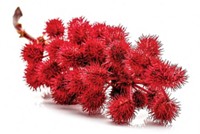Advertisement
Grab your lab coat. Let's get started
Welcome!
Welcome!
Create an account below to get 6 C&EN articles per month, receive newsletters and more - all free.
It seems this is your first time logging in online. Please enter the following information to continue.
As an ACS member you automatically get access to this site. All we need is few more details to create your reading experience.
Not you? Sign in with a different account.
Not you? Sign in with a different account.
ERROR 1
ERROR 1
ERROR 2
ERROR 2
ERROR 2
ERROR 2
ERROR 2
Password and Confirm password must match.
If you have an ACS member number, please enter it here so we can link this account to your membership. (optional)
ERROR 2
ACS values your privacy. By submitting your information, you are gaining access to C&EN and subscribing to our weekly newsletter. We use the information you provide to make your reading experience better, and we will never sell your data to third party members.
Business
A Nutty Chemical
Naturally occurring phenol compounds in cashew shells are becoming increasingly useful to industry
September 8, 2008
| A version of this story appeared in
Volume 86, Issue 36
WHEN CHEMISTS think of basic raw materials, ethylene, propylene, benzene, or even vegetable oil usually comes to mind. Cashew nutshell liquid (CNSL), not so much. But for a couple of companies, this material is seeing strong growth as a coating additive.
CNSL is a by-product of processing cashew nuts in places like Brazil, India, and Vietnam, as well as in Africa. The liquid is mostly anacardic acid, which is used as an antiseptic. When heated, it undergoes decarboxylation to yield cardanol.
It is cardanol—a phenol with an unsaturated carbon chain attached—that is of interest to chemists. "You can use the unsaturation of the C15 side chain to do chemistry like you do on linseed or soybean oils, or you can do traditional phenolic chemistry," says Doug Rhubright, technical director at Palmer International. Skippack, Pa.-based Palmer is the smaller of the two U.S. producers of CNSL derivatives.
The larger of the two, Cardolite, in Newark, N.J., pioneered the CNSL industry. CNSL commercialization began with Mortimer T. Harvey, a student at Columbia University in the 1920s who was working with CNSL. He received commercial backing from Cardolite's predecessor, Irvington Varnish & Insulator, an Irvington, N.J.-based maker of coatings for electrical components.
The first successful product developed by Harvey and Irvington was friction particles, according to Tony Stonis, Cardolite's president. These particles are the result of polymerizing cardanol's side chain. The phenol part of the molecule is then reacted with formaldehyde, much in the same way that traditional phenol-formaldehyde resins are made, to yield a cardanol-formaldehyde resin.
The cashew-based resin found use in vehicle brakes. In the 1920s, the automotive industry was experimenting with braking systems. The coefficient of friction of brakes based on phenol-formaldehyde resins and asbestos varied with changing temperatures, making them unreliable, Stonis says. Adding ground-up cardanol-formaldehyde resin, he says, "stabilized the coefficient of friction so you had a nice consistent stop."
Following Cardolite's lead, Palmer began producing the friction particles in the 1950s. Colloid Chemical, in Cedar Knolls, N.J., had been a third maker, but Palmer bought it about a decade ago.
Although they still supply the brake industry, producers of CNSL derivatives are looking beyond the mature automotive market to CNSL-derived specialty chemicals. For Cardolite, this growth is coming from phenalkamines. Cardolite makes phenalkamines through a Mannich reaction between cardanol, formaldehyde, and amines such as ethylenediamine and diethylenetriamine. The amine becomes attached to the phenol via a methyl bridge.
Cardolite developed phenalkamines in the 1970s while it was part of 3M. The company thought it had a cheap alternative to polyamide curing agents for the durable epoxy coatings used on concrete floors. But phenalkamines made the coatings too dark for use in flooring. Moreover, political unrest in Mozambique disrupted CNSL supply and ruined the cost advantage.
Soon thereafter, Louisville, Ky.-based Devoe Coatings was working on alternatives to polyamide curing agents in marine paints, Stonis relates. The polyamides wouldn't cure below 50 °F, creating a barrier for painting year-round at shipyards. Isocyanates would cure at lower temperatures, but they had to be mixed in the field at perfect ratios to the other epoxy components and were sensitive to humidity, leading to failures in the coatings. "It costs millions of dollars to bring the ship back and paint it again," he says.

PHENALKAMINES can cure epoxies at 35 °F and are more forgiving than isocyanates for blending into epoxies. Stonis says Devoe and AkzoNobel's International Coatings unit were the first two paint firms to adopt the technology, in the 1980s. They held the technology close to their chests. Unaware of the potential for phenalkamines in marine coatings, 3M sold Cardolite to a management team led by Stonis.
By the late 1990s, other paint companies started to adopt phenalkamines for marine epoxies, and Cardolite has since enjoyed double-digit growth for the products. "It is the accepted curing agent in marine coatings," Stonis says.
In 2004, the company opened a second plant, in Zhuhai, China, close to the massive Chinese, South Korean, and Japanese shipyards. Today, coatings components—phenalkamines and Cardolite NC-513, a monoglycidal ether of cardanol used as an epoxy diluent—make up 60% of Cardolite's annual production of about 60,000 metric tons of CNSL derivatives. They also represent about 80% of the firm's sales, with the friction particles making up the balance.
Most of Palmer's growth comes from a product line it calls Cashewthane. According to Rhubright, these are resins made with cardanol that has been polymerized with dehydrated castor oil. The resins are used in place of linseed and soybean oils in alkyd resin formulations. Cashewthane is added to wood coatings, such as those applied to gymnasium floors, and to light industrial primers.
The driver for Cashewthane's growth has been increasingly stringent regulation of volatile organic compounds (VOCs). To take VOCs out of a coating, paint companies typically increase the solids content and decrease the solvents. For alkyds, Rhubright says, this means using lower molecular weight, lower viscosity resins that prolong the dry time and reduce the hardness of the final coating. Cashewthane-based formulations, in contrast, don't sacrifice drying time or hardness.
Rhubright adds that the renewable materials content of the resins is about 50% greater than other alkyd resins, a boost that is earning them additional attention. "A lot of our customers have projects going on for sustainable development of coatings," he says.
Palmer started making the resins five years ago. "This is beyond a shadow of a doubt the fastest growing part of our business," says Kevin L. Palmer, Palmer's chief executive officer and grandson of the company's founder.
The firm is also getting into the phenalkamine business. "As we are marketing our Cashewthane toward the light industrial primer market, customers are asking us to look at their phenalkamine needs as well," Palmer says.
Another market where Palmer is logging sales increases is CNSL-based surfactants, the CEO says. The company is ethoxylating cardanol to create a surfactant used as a pigment dispersant for water-based inks. According to Stonis, Cardolite is also working on cardanol-based surfactants.
Including the frictional materials, Palmer processes about 7,000 metric tons of CNSL per year at its plants in Skippack and in Hartlepool, England. The company is expanding capacity in Skippack by installing a new reactor. It is also considering its "next location, preferably in an emerging region," Palmer says.
To develop new markets, Palmer is looking at ultraviolet-light-curable coatings and other coatings additives. The company is also developing a water-based alkyd emulsion system based on cardanol. Success with any of these products would open yet another niche market for CNSL and perhaps sustain the venerable industry for another generation.





Join the conversation
Contact the reporter
Submit a Letter to the Editor for publication
Engage with us on Twitter